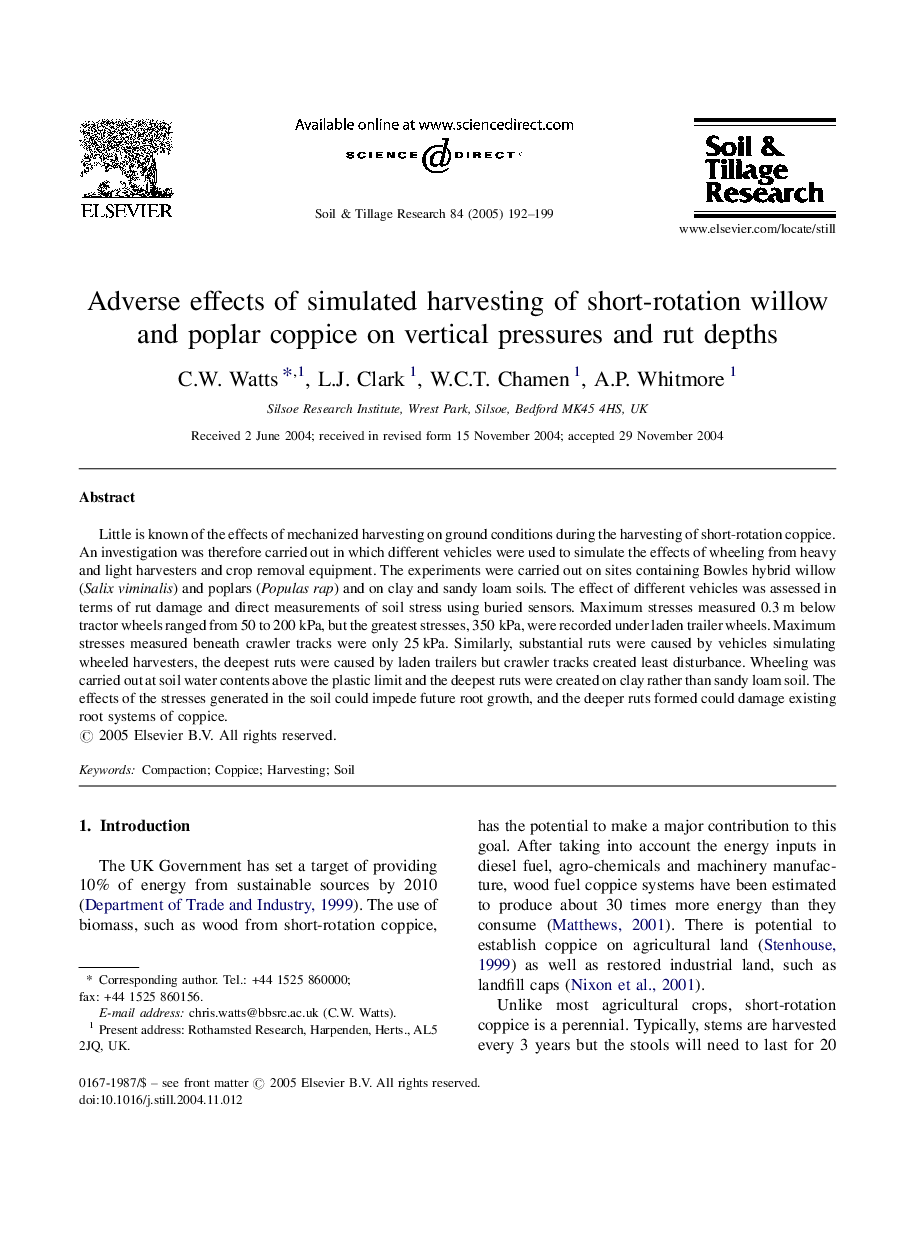| Article ID | Journal | Published Year | Pages | File Type |
|---|---|---|---|---|
| 10295289 | Soil and Tillage Research | 2005 | 8 Pages |
Abstract
Little is known of the effects of mechanized harvesting on ground conditions during the harvesting of short-rotation coppice. An investigation was therefore carried out in which different vehicles were used to simulate the effects of wheeling from heavy and light harvesters and crop removal equipment. The experiments were carried out on sites containing Bowles hybrid willow (Salix viminalis) and poplars (Populas rap) and on clay and sandy loam soils. The effect of different vehicles was assessed in terms of rut damage and direct measurements of soil stress using buried sensors. Maximum stresses measured 0.3Â m below tractor wheels ranged from 50 to 200Â kPa, but the greatest stresses, 350Â kPa, were recorded under laden trailer wheels. Maximum stresses measured beneath crawler tracks were only 25Â kPa. Similarly, substantial ruts were caused by vehicles simulating wheeled harvesters, the deepest ruts were caused by laden trailers but crawler tracks created least disturbance. Wheeling was carried out at soil water contents above the plastic limit and the deepest ruts were created on clay rather than sandy loam soil. The effects of the stresses generated in the soil could impede future root growth, and the deeper ruts formed could damage existing root systems of coppice.
Keywords
Related Topics
Physical Sciences and Engineering
Energy
Renewable Energy, Sustainability and the Environment
Authors
C.W. Watts, L.J. Clark, W.C.T. Chamen, A.P. Whitmore,
